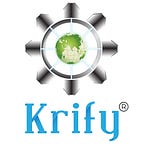Developing mobile apps has become an integral part of modern-day business. Mobile app development is not just for startups or small businesses; large corporations are also developing their apps in-house. One such technological company developing its mobile applications is Google with Flutter.
A well-designed mobile app can help you stand out in today’s competitive market by making it easier for people to find your product or service. The best way to do so is by focusing on the user experience, which includes everything from what they see when they open up your app to whether or not it crashes unexpectedly when they try to use it for the first time. This blog post will explore how Flutter can be used by larger companies to create a better user experience and also help them save time and money when it comes to reusing code across different platforms.
Advantages of Developing a Mobile App using Flutter
Flutter is a bit different from its competitors in some key aspects. Let’s take a quick look at what distinguishes Flutter app development from other frameworks.
- Open Source: Google’s Flutter is an open-source code software development tool. It allows for the quick filing of bugs and access to documentation via open developer forums. It enables Flutter programmers to learn and evolve alongside the platform’s ever-changing population of developers.
- Need Less Testing: Basically, testing would include checking for platform compatibility. Apps are written in Flutter employ a single code base that does not alter when running on different platforms. Now all that’s required is to test a Flutter application once, saving the developer a significant amount of money and time.
- Single Codebase: Because it is a cross-platform framework, programmers may develop code once and utilize it on numerous systems. This means that a single programme can operate on both iOS and Android. This saves a significant amount of time and effort when building code for several platforms, as is the case with native frameworks.
- Dart as Programming Language: To construct apps, Flutter uses Dart, an object-oriented programming language. Dart’s notable features include a large standard library, garbage collection, strong typing, generics, and async-awaits. Dart is similar to Java and incorporates many popular features from other languages.
- Attract More Investors: An MVP designed using Flutter is cross-platform compatible and offers a better user experience. This employs a large number of investors and allows them to support your project.
- Reload and Development: Any upgrades are available in a matter of seconds to both designers and developers. They will not have to wait for updates and can continue developing new features without interruptions. This increases app performance and shortens the time required to build a viable application.
- Use of Custom Widgets: Flutter provides a plethora of widgets to aid developers in their creation process. It greatly simplifies and accelerates the creation of a basic user interface. Simply develop a UI element once, and it will adapt to numerous resolutions, screens, and platforms. You can also nest one widget inside another to provide several functions.
- Tech Community: There is a strong developer community that is constantly working to make Flutter better. They make it easy for newbies to enter the framework and learn it. With the team’s assistance, anyone may easily begin designing an app.
Conclusion:
The advantage of developing a mobile app using the Flutter SDK is that it has a simple, flexible, and productive development process. It also offers a beautiful native user experience for iOS and Android. And with just six code files, you can create your first application in no time.
